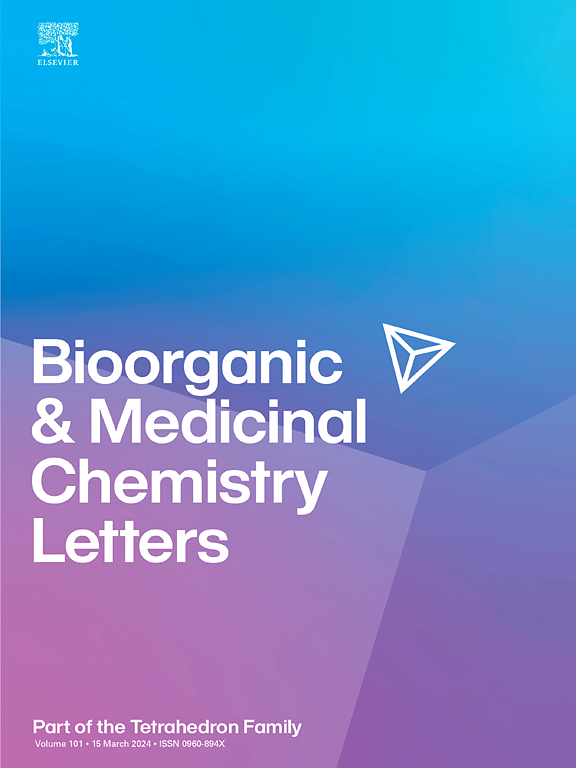Targeting virulence to disarm the pathogen: Enzyme-activated-substrate inhibition of Anthrax edema factor
IF 2.2
4区 医学
Q3 CHEMISTRY, MEDICINAL
引用次数: 0
Abstract
Since the discovery by Fleming that a mold could inhibit the growth of bacteria, each new antibiotic developed to treat infections quickly lost its efficacy due to the emergence of resistant strains. As a result, the ongoing threat by antibiotic-resistant pathogens would benefit from new strategies to combat bacterial infections. An ideal drug is one which is efficacious, can limit selective pressure against the pathogen, and potentially augment the currently available antibiotics to restore their efficacy. Targeting virulence factors used by bacteria to establish infections has the potential to meet these goals. Anthrax edema factor (EF), an adenylate cyclase secreted by Bacillus anthracis, which causes anthrax, is an example of this type of virulence factor. Our previous work showed that the activity of EF can be blocked with small molecule covalent inhibitors targeting the catalytic site. The current report extends this work with the discovery of enzyme-activated-substrate inhibitors which display improved drug-like properties and stability.

靶向毒力解除病原体:酶激活底物抑制炭疽水肿因子。
自从弗莱明发现霉菌可以抑制细菌生长以来,由于出现了耐药菌株,每种用于治疗感染的新抗生素都很快失去了功效。因此,抗生素耐药病原体的持续威胁将受益于对抗细菌感染的新策略。理想的药物是一种有效的药物,可以限制对病原体的选择压力,并有可能增加目前可用的抗生素以恢复其功效。针对细菌使用的毒力因子来建立感染有可能实现这些目标。炭疽水肿因子(EF)是由炭疽芽孢杆菌分泌的腺苷酸环化酶,引起炭疽,是这种类型的毒力因子的一个例子。我们之前的工作表明,EF的活性可以被靶向催化位点的小分子共价抑制剂阻断。目前的报告扩展了这项工作,发现了酶激活的底物抑制剂,它显示出改进的药物样特性和稳定性。
本文章由计算机程序翻译,如有差异,请以英文原文为准。
求助全文
约1分钟内获得全文
求助全文
来源期刊
CiteScore
5.70
自引率
3.70%
发文量
463
审稿时长
27 days
期刊介绍:
Bioorganic & Medicinal Chemistry Letters presents preliminary experimental or theoretical research results of outstanding significance and timeliness on all aspects of science at the interface of chemistry and biology and on major advances in drug design and development. The journal publishes articles in the form of communications reporting experimental or theoretical results of special interest, and strives to provide maximum dissemination to a large, international audience.

 求助内容:
求助内容: 应助结果提醒方式:
应助结果提醒方式:


